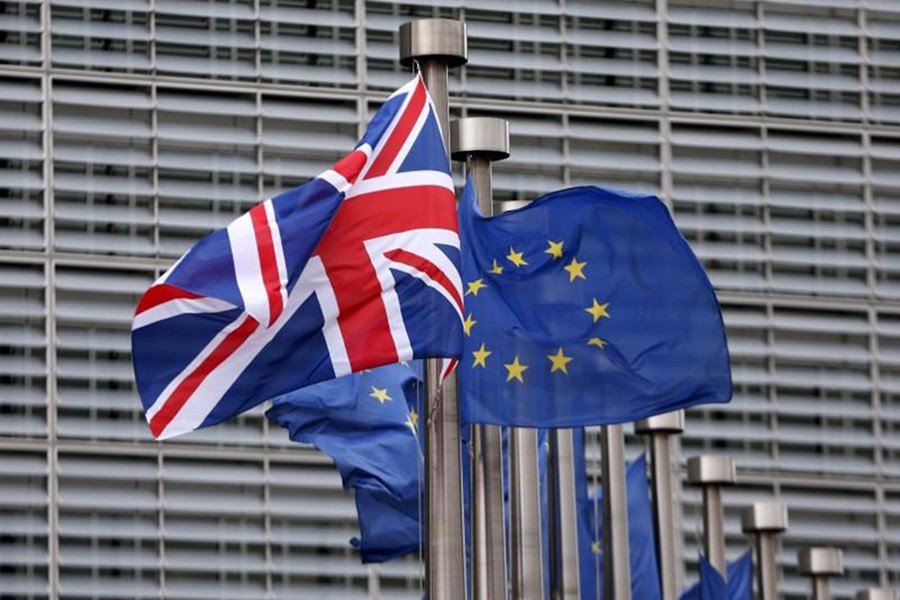As the Brexit negotiations enter their endgame, a stalemate has become the most likely outcome. This is good news. It does not mean that Britain will "crash out" of the European Union (EU) with no agreement: deals in the European Union tend to be struck at the last possible moment. But the British parliament will probably reject whatever arrangement Prime Minister Theresa May manages to negotiate with European leaders, and the likeliest way to end the deadlock will be to hold a new referendum that reconsiders the decision to leave the EU.
Until recently, conventional wisdom dismissed this possibility. But now the political mechanics that could lead to a new referendum and the cancellation of Brexit are becoming clear.
Whatever version of Brexit May proposes now faces a veto. A Norwegian-style "soft Brexit" that would keep Britain in the EU's trading structures would be blocked by the Eurosceptics in May's Conservative Party. A "hard Brexit," which would require border controls with the Republic of Ireland, is unacceptable to the Irish government and the EU. And a hybrid arrangement that would take Britain out of the EU single market but keep Northern Ireland in would be a dealbreaker for Northern Ireland's Democratic Unionist Party (DUP), whose support May needs to stay in power.
These competing vetoes explain May's only strategy for delivering Brexit: to tell MPs and EU leaders that they must choose the lesser of two evils. Either they accept whatever Brexit deal May proposes, or they will face a chaotic "no deal" Brexit that would be catastrophic not just for the United Kingdom, but for the entire EU.
But May's effort to present a Hobson's Choice suffers a fatal flaw: almost nobody believes that she would dare to inflict chaos on British businesses and voters. A no-deal Brexit would rule out the transition period that Britain desperately needs to negotiate the thousands of rules, regulations, and standards required to continue trading with Europe, as well as the US, Japan, China, and other countries covered by agreements negotiated by the EU over many decades.
Without this transition period, British exports would come to a temporary standstill in March 2019, because agreements on product safety, labelling, food quality, public procurement, and hundreds of other little-known issues must be negotiated to trade under World Trade Organisation (WTO) rules - and these need to satisfy all 164 members of the WTO. The disruption of trade flows would only be temporary, because Britain would eventually negotiate the necessary WTO agreements, but even a brief interruption could be devastating, as evidenced by the "sudden stop" in bank finance that lasted only a few weeks after the bankruptcy of Lehman Brothers in 2008.
To make her no-deal threat more credible, May has tried sending dozens of "technical notices" to businesses, hospitals, and public agencies about the emergency preparations they should make. Unfortunately for the Brexiteers, the effect of these warnings has been counter-productive: instead of triggering an upsurge of preparations, the prospect of aircraft being grounded, hospitals running out of medicines, and exports coming to a standstill have made a no-deal Brexit implausible to the point of absurdity and probably discouraged business decision-makers from wasting money preparing for such an unrealistic contingency.
The upshot is that even if May genuinely wanted to pursue a no-deal Brexit, a large parliamentary majority would unite to prevent it. While there are questions about the exact parliamentary procedures, the political dynamics are clear. Pursuing such a desperately risky gamble against the expressed wishes of a parliamentary majority would trigger a constitutional crisis that could be resolved only by appealing to voters - either through a general election or a new referendum.
The opposition Labour Party would demand a general election, but the Conservatives, split as they are over Europe, would unite to block this. Once the election gambit failed, Labour would almost surely support a referendum, which is backed by 85 per cent of its members. Only a few Conservatives would then be needed to create a referendum majority, and they might find themselves with an unexpected ally: Theresa May.
For May, a referendum could be the key that unlocks the cage in which her own "red lines" have trapped her. Once it was clear that the only option for leaving the EU would be to crash out with no deal, May could honestly claim that she had followed the mandate from the 2016 referendum to deliver Brexit, but that this would involve more disruption than predicted. It would therefore be right to ask voters where or not they still wanted to go ahead with Brexit on these tougher terms.
By posing this question, May could outmaneuver Boris Johnson and her other rivals. Because the hardline Brexiteers have presented "no deal" as a perfectly acceptable outcome, they could not object if this were the form of Brexit put to voters. If it won, May could not be held responsible and would have the satisfaction of watching Johnson cope with the resulting chaos.
Much more likely is that a new referendum would reject a no-deal Brexit, not just because of the economic risks, but also because the demographic balance of the UK population has shifted in favour of pro-European voters by around one million since 2016. If voters rejected "no deal" in favour of no Brexit, May's hardline opponents would be silenced, and her position as Prime Minister would be secured until the 2022 election. Better still, the end of Brexit uncertainty would result in an economic rebound, almost certainly guaranteeing a Conservative victory in 2022.
In short, a new referendum to break the impending parliamentary deadlock would probably mean that Britain remains in Europe and May remains in Downing Street. Why would she not seize this chance?
Anatole Kaletsky is Chief Economist and Co-Chairman of Gavekal Dragonomics and the author of Capitalism 4.0, The Birth of a New Economy.
Copyright: Project Syndicate, 2018.
www.project-syndicate.org


